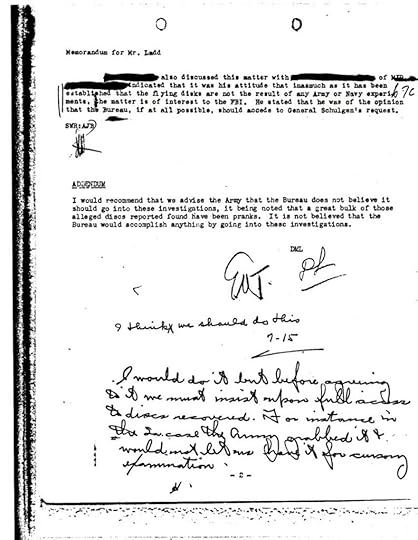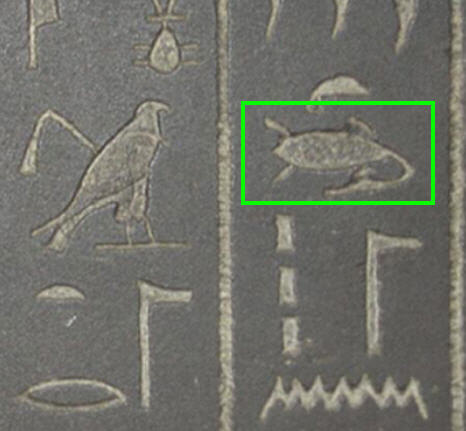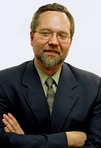Michael S. Heiser's Blog, page 31
September 10, 2017
Naked Bible Podcast Episode 176: Hebrews 1:5-14
The writer of Hebrews builds on his assertions that the particular son of God (Jesus) who was the agent of creation, eternal wisdom, and the essence of God, by comparing him to other supernatural sons of God (angels). But what does a phrase like “You are my son, today I have begotten you” mean? Does this mean Jesus was a created being? This episode notes the use of this phrase and other Old Testament passages utilized by the writer of Hebrews to explore its actual meaning. Along the way, the episode discusses two links in Hebrews 1 to the Deuteronomy 32 worldview and the divine council.
There was a special deal from Logos Mobile Ed associated with this episode: Get 40% off Dr. Heiser’s Jewish Trinity course. Limited Time Offer.
logos.com/nakedbiblepodcast
September 6, 2017
One-Question Survey about Angels
Many of you know I’m working on a book about angels for Lexham Press. In about two weeks I’ll be hitting the final section of the book. One of the two chapters in that section is entitled “Christian Myths about Angels.” I’d like to hear about some of the odd things you’ve heard about angels that just aren’t biblical correct or otherwise problematic. You can take the survey here (it’s an essay question, so write what you want). The goal is to not miss something that I really ought to comment on in this chapter.
Thanks!
September 2, 2017
Have You Ever Visited Mike’s Recommended Reading Page?
If not, you should — and then bookmark it.
I keep getting emails about what books I recommend on various topics. That’s why I created this page. All sorts of topics and titles. Check it out!
Naked Bible Podcast Episode 175: Hebrews 1:1-4
Hebrews 1:1-4 sets the tone for the entire epistle. The writer asserts that the revelation given by God through one particular son—Jesus Christ—is superior to Torah. It is Christ who is the full expression of God’s wisdom, and the actual, essential being of God Himself. Since the “inheritance” language of Heb 1:1-4 cannot suggest that God himself is being retired and succeeded, the language needs to be understood in terms of co-rulership. But why is this particular son (1:2) different than all others? This episode explores and expands on these themes and addresses this question by discussing the Old Testament context for the phrase, “the radiance of the glory of God,” Wisdom Christology, and hypostasis terminology.
Naked Bible Podcast Episode 174: Live from Lubbock, TX
Dr. Heiser answers questions from a live audience. Thank you to Wayland Baptist University for hosting and Nathan for organizing the event. Thank you to everyone who came and joined us in Lubbock, Texas.
September 1, 2017
Remember this Famous FBI UFO Memo?
Below is one of the most well-known FBI documents associated with UFOs. It’s known as the Hoover-Tolson (or, Ladd-Hoover) memo and is dated July 15, 1947. The chronological proximity to the Roswell case is, of course, what makes it famous. UFO researchers say it’s proof that the government retrieved a flying saucer from Roswell.
It isn’t. First, what some researchers interpret as “Sw” in Hoover’s handwriting isn’t “Sw” (for “Southwest”; i.e., New Mexico). It’s “La” for “Louisiana.” The disk also isn’t what you may have been led to think. Check out this link for what’s really going on.


August 31, 2017
Registration for the Fort Worth TX Event is Now Closed
I’ll be speaking in Fort Worth on Saturday, Sept 9. They have reached their capacity for registration, so registration is closed.
That said, the organizer told me that some who have registered may not come (always happens), so you may still get a seat walking in. They also are giving consideration to an overflow room (TV).
August 28, 2017
Dinosaurs in Ancient Egyptian Texts?
A long time ago I blogged about the fact that certain “dinosaur petroglyphs” were really not ancient depictions of dinosaurs. The same goes for ancient Egyptian texts. There are a number of sites on the Internet (sadly, some maintained by Christians) that tout images like this one as evidence of human-dinosaur contemporaneity:

Sorry, but this isn’t a plesiosaur. It’s a well-know hieroglyph for something entirely different. For a thorough presentation of this paleobabble and its resolution in (perish the thought) primary texts), click here. It’ll make you laugh once you discover what the object really is.
While we’re at it, I’ve mentioned many times on the podcast and other venues that Leviathan, a sea monster mentioned in the Bible, was not a dinosaur. Leviathan is a symbolic portrayal of chaos or a chaos deity. It is known by name in contemporary Ugaritic texts.
As McLaughlin notes, Leviathan is:
A primeval sea serpent representing chaos. Leviathan appears in the Ugaritic texts as Lītānū. KTU 1.5 I, 1 describes how Baal smote Lītānū, “the twisting [cf. Arab. lawiyā] serpent, the tyrant with seven heads” (likewise Anat [KTU 1.3 III, 40–42], but lacking the name Lītānū). Ancient Near Eastern iconography consistently depicts the storm-god conquering the serpent.
John L. McLaughlin, “Leviathan,” ed. David Noel Freedman, Allen C. Myers, and Astrid B. Beck, Eerdmans Dictionary of the Bible (Grand Rapids, MI: W.B. Eerdmans, 2000), 803.
August 24, 2017
Nanotechnology and Cellular Regeneration
Hmmm …. Where have we heard of this kind of thing before?
It’s not just marketing when I say that all the data points in my novels are real; the fiction is how they’re put together. And of course the characters … mostly.
August 21, 2017
Heavenly Worship in Second Temple Judaism, Early Christianity, and Gnostic Sects: Part 5
This is the 5th and final post in a series by guest blogger, Stephen Huebscher
——-
This is the final post in this series, and I draw a number of conclusions here. At the end, I list all the works that I referenced in this series, in case I missed one earlier. This has been a great opportunity to read through these texts again and think through the issues and the claims that I make here. Thanks to Mike and all of you for your openness!
GENERAL CONCLUSIONS
The first major finding of this study was that cosmology was often linked to liturgy in such a way that it could be considered an indicator of the kind of worship that was practiced. Cosmology includes the description of heaven and beings in it, and their relationship to those on the earth (and under it). There were two primary cosmologies used by these groups: the biblical cosmology and the platonic cosmology. In the biblical cosmology, there are three basic levels to the universe (heaven, earth, and the underworld), as opposed to seven in the Hellenistic cosmologies. For instance, Aune writes,
It is striking that Revelation does not reflect more specifically the cosmology typical of the Hellenistic and Roman period, in which the cosmos was thought to consist of seven heavens. Paul’s account of his own ascent to the third heaven reflects a cosmology of at least three heavens (2 Cor 12:1-5). John knows only a single heaven as the dwelling place of God and his angels. This older cosmology consisted of a three-tiered universe consisting of heaven above, earth in the middle, and the underworld beneath (the three-tiered universe is also reflected in several apocalypses, including the five apocalypses that constitute 1 Enoch, the Testament of Abraham, and the Apocalypse of Ezra . . . .) The earth itself was thought to be a flat disk surrounded on all sides by water. Below the earth was the underworld, which was the realm of the dead, called Sheol by the Israelites but Hades by the Greeks. Above the earth was the vault of heaven containing the heavenly bodies and, in the highest place, God and his angelic entourage. The new cosmology that developed during the Hellenistic period, and quickly displaced older cosmologies, regarded the earth as a sphere . . . . The earth was thought to be a stationary center surrounded by seven planets (including the sun and moon), each of which moved in its own sphere . . . . The earth was at the same time the ‘innermost’ as well as the ‘lowest’ part of the cosmos . . . . God was thought to dwell in the highest heaven or sphere, usually the seventh or eighth heaven (Corpus Hermeticum 1.26), with various supernatural beings located at various levels below him. (David Aune, Revelation 1—5, 318).
The mystical belief of “worship=ascending to heaven,” which was first a part of Jewish and later Gnostic (and still later, Christian) mystical groups, seems to have built on the Platonic cosmology of various levels Plato described in Timaeus. Timaeus was the standard work for much of the ancient world about the cosmology of heaven and earth. In it, the astronomer/philosopher who sees the stars and understands the cosmology is the hero. Margaret Barker has argued (unconvincingly, in my opinion) that this work reflects First Temple Judaism (via Pythagorus). More helpful is Gordon Lathrop, who has pointed out significant parallels between the blind man in Timaeusand the blind man (his name in Aramaic is “Bar-Timaeus,” which Mark carefully explains means “the son of Timaeus”) in Mark’s gospel.
At the junction of the two major parts of the Second Gospel, between the Gospel’s ‘Galilee’ and its ‘Jerusalem,’ exactly between the ministry narratives and the passion story, there stands the account of a blind man (Mark 10:46-52). He is called ‘the son of Timaeus.’ The name itself strikes us at least three ways. First, this is the only recipient of the healing ministry of Jesus in the entire Gospel who is given a name at all. The name matters. Second, the name is intensified, this patronymic being repeated both in Greek and in Aramaic. . . . And third, as many commentators have noted, the name is very hard to place in a Jewish context. It is not a recognized, current Hebrew or Aramaic name. . . . It is a Greek name and, in fact, one with a very specific and recognizable history. Here is the ‘son’ of Timaeus, Plato’s Timaeus, and, ironically, he is himself blind, crying out in lament, seeing nothing, going nowhere. This cry for help occurs at the very place, structurally, that the lament of the blind man occurs in the Timaeus: at the juncture of the two major parts of the book. (Gordon Lathrop, 30-31).
Unlike Plato’s blind man who laments without hope, Bar-Timaeus abandoned his cloak (perhaps a philosopher’s cloak?) and came to Jesus. After calling Jesus “my teacher,” he received sight and followed Jesus “in the way” (Mark 10:52).
It occurs at a place that corresponds, in the Timaeus, to the ethical culmination of the argument, to the turning of the consideration of all things toward the ordering of the life of the wise. Only now the wise—together with everyone else—are invited to the wise folly of the cross. (Lathrop, 33)
A second difference between the two cosmologies is the population of heaven. In the biblical cosmology, not only is God in heaven, but there is a core group of the heavenly host that works closely with God. The core group in the biblical model is known as the divine council (DC) or divine assembly, and is found in many places throughout Scripture. “One of the central cosmological symbols of the Old Testament is the imagery of the divine council and . . . the issues of order in Israel and in the cosmos are rooted in and understood as under the aegis of the divine council” (P. Miller, 423) It is not an exaggeration to say that the DC may be the most important hermeneutical guide for understanding celestial worship, whether in ancient Jewish or early Christian theologies. Even some Gnostic texts adopted an eclectic approach and incorporated a heavenly assembly into their doctrine, while still relying primarily on the Platonic model. In the original Platonic model, there is no such core group of “helpers.” Instead, there are the Ideals.
A lexical study of the words used for the DC includes, among others, the Hebrew words qahal (“congregation”), ‘edah “assembly”), and most importantly, sod(“council”). The sod was a group of elohim that worked closely with Yahweh. The term sod was also applied to righteous, human worshipers on earth in some texts.
Those beings in his council (sod) are charged with three functions:
(a) “demonstration of Yahweh’s omnipotence in the form of accompaniment (Dt. 33:2), praise (Job 38:7; Ps. 19:2[1]; 29:1f.), fear (Ps. 89:7f. [6f.]), counsel in the form of obedient response (Job 1f.; Isa. 6:8; cf. the resistance to polytheistic notions in Isa. 40:13:f.);
(b) mediation of Yahweh’s salvific will to the world of human beings (1 K. 22; Isa. 6; cf Dt. 32:8f.; Jer. 23:22);
(c) implementation of social justice (Am. 3:7; cf. Ps. 82:3f.).” (Fabry, 10.174-75)
The first category contains our primary interest—heavenly worship—but you can see that it is likely that these various functions are interconnected. The DC is probably the heavenly model for the creation of the human community in the early chapters of Genesis. It is the congregation that is the plural referent in “let us make man as our image” (Gen. 1.26-27). The text is clear that God made the man (the Hebrew verbs are singular here), but that the model was plural. Thus at the very beginning of the Torah, the cornerstone of the OT and of the whole Bible, we have humans created in order to be the physical, earthly representation of the spiritual, celestial community.
To say that the image of God is the primary overarching motif in Scripture is good. However, this claim goes beyond that, and this leads us to the third major finding of this study: that liturgy or worship is one of the key purposes of human existence. It is an essential part of our reason for existence.
Psalm 29 is an example of this. “If Psalm 29 were to be considered a song for the solemn prostration before Yahweh . . . then we would have to assume that a heavenly act would correspond to the earthly hymn of praise and prayer (cf. especially Psalm 148)” (Kraus, 348). In other words, the heavenly worship is the model for the earthly worship. In fact, Psalm 29:9b “is the key-verse of the whole psalm—it leads us away from the commotions on the earth up to the heavenly sanctuary where the company of the heavenly beings recognizes and glorifies these very occurrences on the earth as a revelation of the glory of Jahweh” (von Rad, 1.360).
NOTES/BIBLIOGRAPHY
All quotations from the Apostolic Fathers are from the translation of Lightfoot, Harner, Holmes, 2nd edition.
All quotations of Origen’s Commentary on John 13-32 are from Ronald E. Heine, trans., FOTC, Origen: Commentary on the Gospel According to John Books 13—32(Washington, D.C.: Catholic University of America Press, 1993). Thanks to Peter Martens for pointing out this passage to me.
“The Martyrdom of Saints Perpetua and Felicitas,” in Acts of the Christian Martyrs, trans. Herbert Musurillo (London, UK: Oxford University Press, 1972), 111-13.
Harold Attridge, Hebrews (Minneapolis: Fortress Press).
David H. Tripp, “‘Gnostic Worship’: the State of the Question,” in Gnosticism in the Early Church, Studies in Early Christianity 5, ed. David M. Scholer (New York and London: Garland Publishing, 1993), 322-23; reprinted from Studia Liturgica 1 (1987): 210-20.
Margaret Barker, Great High Priest: The Temple Roots of Christian Liturgy (London and New York: T & T Clark, 2003).
Patrick D. Miller, “Cosmology and World Order in the Old Testament: The Divine Council as Cosmic-Political Symbol,” in Patrick D. Miller, Israelite Religion and Biblical Theology: Collected Essays, JSOTSS 267 (Sheffield, 2000). Previously published in HBT 9 (1987), 53-78.
Robert A. Oden, Jr., “Cosmology, cosmogony,” Anchor Bible Dictionary 1.1170.
H.-J. Fabry, “סוד, sod” in TDOT 10.174-75; H.-J. Fabry, “סוד als ekkleiologischer Terminus,” Bausteine Biblischer Theologie: Festgabe für G. Johannes Botterweck zum 60. Geburtstag dargebracht von seinen Schülern, (Köln-Bonn: Peter Hanstein, 1977).
Nag Hammadi Library in English, ed. by James Robinson, 3rd edition.
April D. Deconick, “Heavenly Temple Traditions and Valentinian Worship: A Case for first-Century Christology in the Second Century,” in Carey C. Newman, James R. Davila, and Gladys S. Lewis, Jewish Roots of Christological Monotheism: Papers from the St. Andrews Conference on the Historical Origins of the Worship of Jesus, SJSJ 63 (Leiden: Brill, 1999), 308-41.
Pheme Perkins in “Identification with the Savior in Coptic Texts from Nag Hammadi,” in Jewish Roots of Christological Monotheism, ed. Newman, Davila, Lewis (Leiden: Brill, 1999).
Frank C. Senn, “Lutherans Are Natural ‘Splitters’,” Worship 79 (July 2005).
Gordon W. Lathrop, Holy Ground: A Liturgical Cosmology (Minneapolis, MN: Fortress Press, 2003.
Jean Daniélou, Theology of Jewish Christianity I.
K. Beale, NIGTC,Revelation (Grand Rapids, MI: Eerdmans, 1999),
Daniel Boyarin, “The Gospel of the Memra: Jewish Binitarianism and the Prologue to John,” in HTR 94 (2001) 243-84.
J. Krause,Psalms 1-59: A Commentary (Minneapolis, MN: Augsburg Publishing House, 1988)
von Rad,Old Testament Theology, trans. D. M. G. Stalker (Louisville, KY: Westminster John Knox Press, 2001).
David E. Aune, WBC, 3 volumes: Revelation 1—5, Revelation 6—16, and Revelation 17—22.
Hans Wildberger, Isaiah 1—12.
George Nickelsburg, 1 Enoch 1 (Hermeneia).
James Davila, Liturgical Works.
Claus Westermann, “kbd” TLOT 2.
Robert Hayward, Divine Name and Presence: The Memra.
Lucien Deiss, trans Benet Weatherhead, Early Sources of the Liturgy (Collegeville, MN: Liturgical Press, 1975).
Ringgren, “עמד,” inTDOT 11.182-85.
Grundmann, “‘ίστημι,”TDNT 7.641, 43.
Michael S. Heiser's Blog
- Michael S. Heiser's profile
- 921 followers



